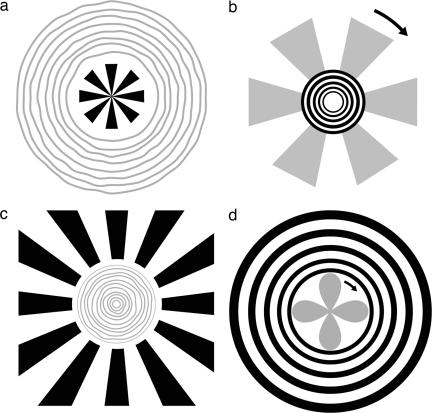Fig. 3.
Lateral interactions between some biasing stimuli and hallucinatory percepts. Shown are an artist's depictions of some subject reports. Physical biasing patterns are shown in black, and hallucinations are shown in gray (depicting the shadowy nature of the percepts). (a) If the area around a small fan shape is flickered, subjects report seeing illusory circular patterns. (b) If the area around a circular pattern is flickered, all subjects report seeing an illusory rotating fan shape. If the circles are flickering too, the rotating fan shape extends through the physical circles. The direction of rotation is arbitrary and subject to reversal; the number of illusory features is often but not always proportional to the physical stimulus. (c) Similar geometrical effects occur if the biasing area is presented in the periphery and the empty central area is flickered. In this case the percept is often of tightly packed rings. (d) A rotating petal-like pattern often appears in the flickering central area.

